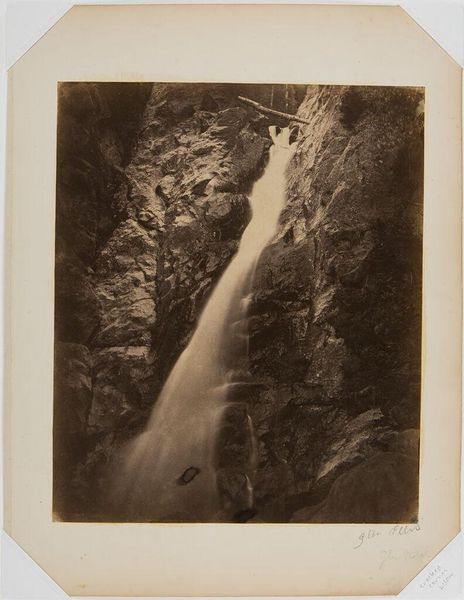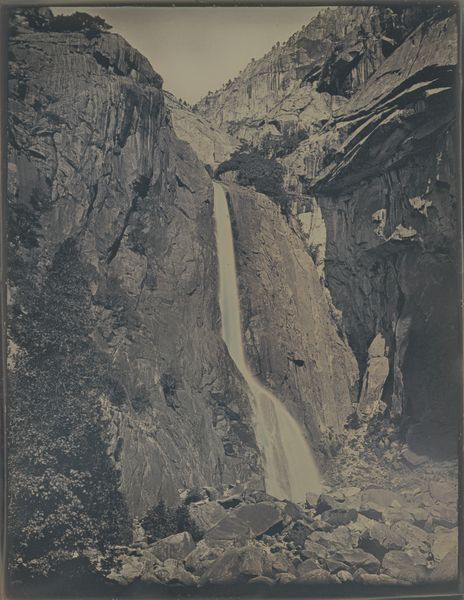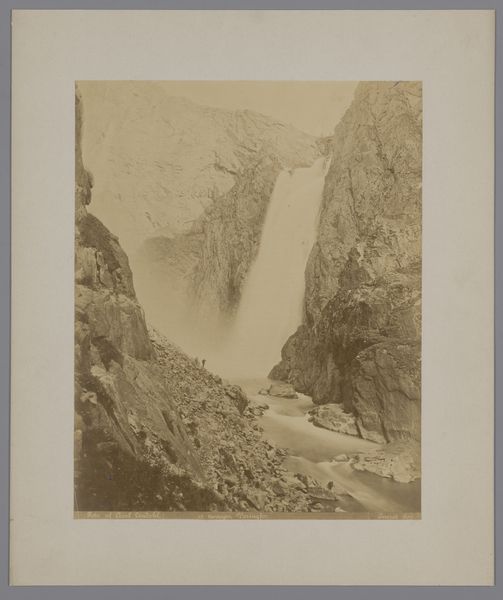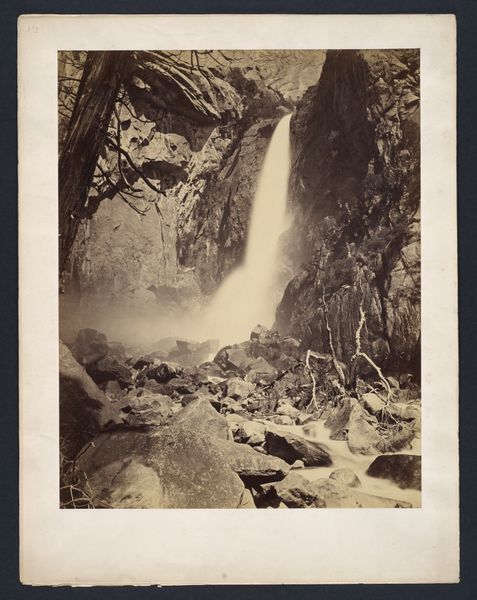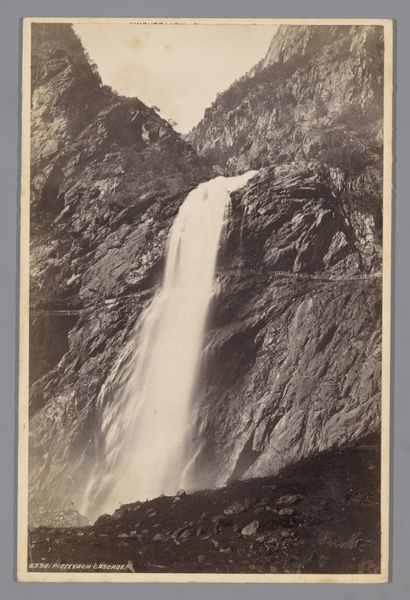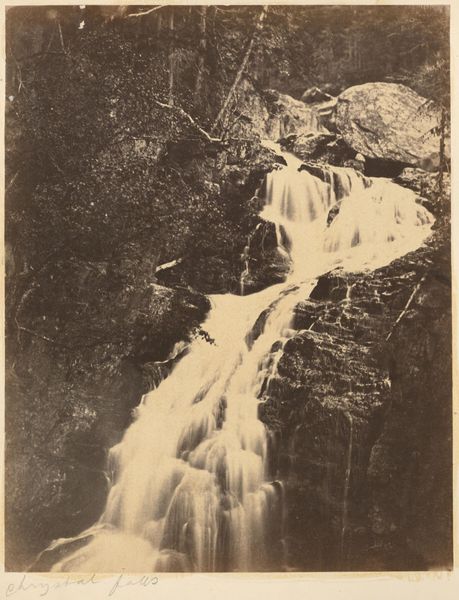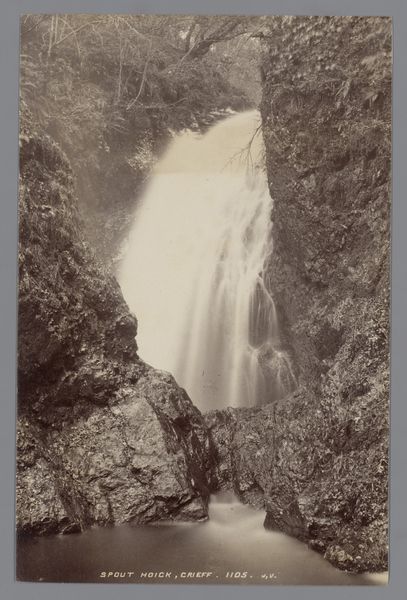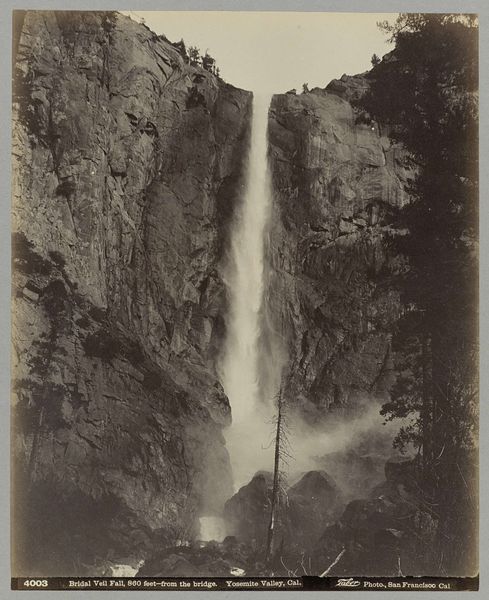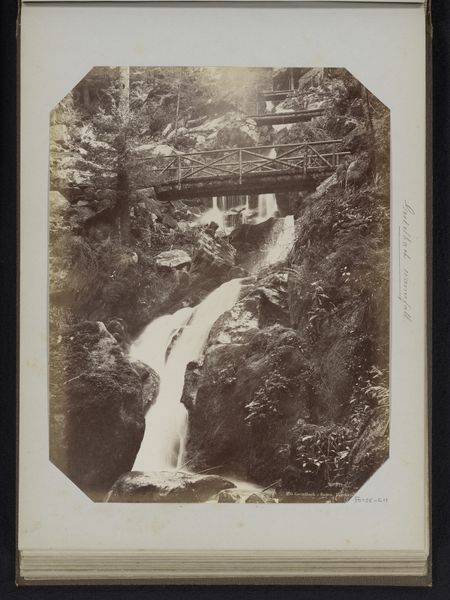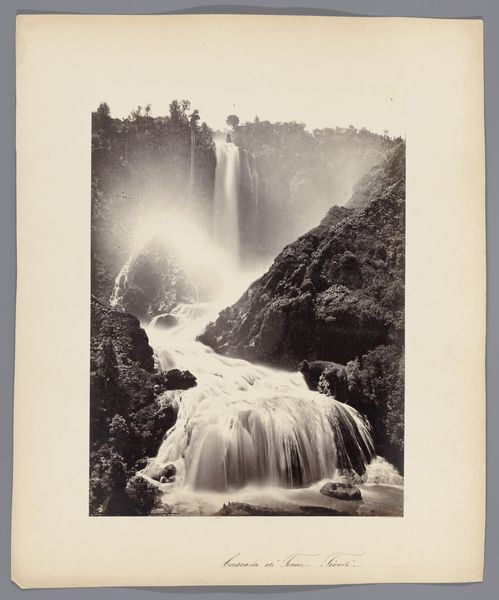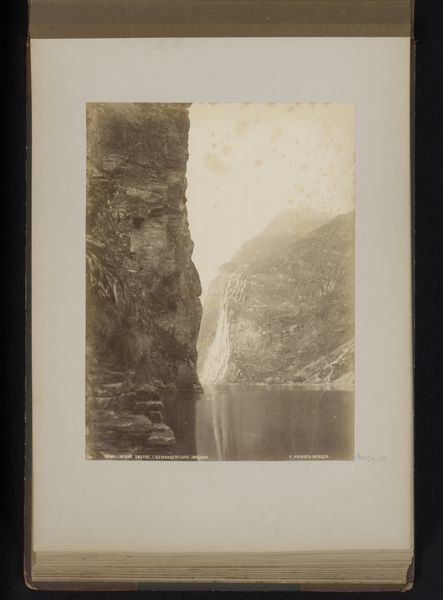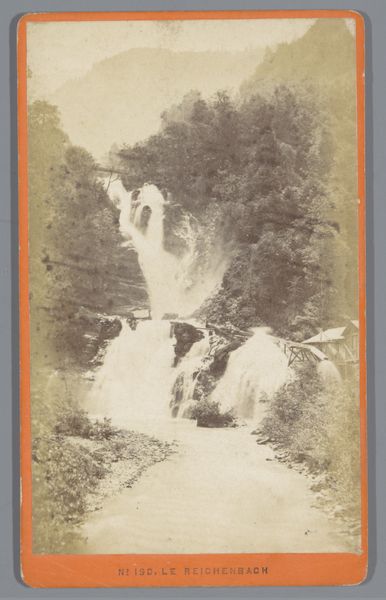
Copyright: Public Domain
Curator: Welcome. Before us is Robert Macpherson's "Tivoli Waterfall," an albumen print dating from around 1860 to 1865, currently held at the Städel Museum. Artist: Wow, what a dramatic pour! The way the waterfall slices through the landscape feels almost violent, yet there’s something incredibly peaceful about the muted tones and the almost meditative stillness it captures. Curator: It is striking, isn't it? Macpherson was working during a time of burgeoning colonial expansion, and these images of seemingly untouched landscapes, like the Tivoli, need to be considered within that context. The aesthetic choices he made contribute to constructing certain ideas about the land, ideas that certainly had ideological consequences. Artist: You're so right, the untouched Eden trope. Yet I wonder if he felt as conflicted as I do, capturing such splendor. He seems torn— wanting to convey the pure force of nature but framing it in such a conventionally romantic way, the oval format almost taming the wildness. Did folks really perceive nature this way? Pristine, yet observed through a very deliberate lens? Curator: Absolutely. That’s part of the beauty, and tension, of the Romantic period, to highlight a simultaneous idealization of the pastoral versus the harsh realities faced by those existing within that world, and the historical circumstances, in terms of gender, race, class, informing those artistic perspectives and visual languages. This image can invite a critical lens onto our present understandings of place, access, and ecological awareness. Artist: It hits you right in the gut, thinking about those layers. What starts as pretty scenery becomes heavy with historical baggage and political weight. For me, as a creative, it is an ongoing challenge how to acknowledge history honestly while letting art breathe on its own. I mean, to give an image room to still say something without us narrating every little corner of it. Curator: And perhaps, allowing art to breathe involves equipping ourselves with historical consciousness, recognizing that artistic creation is never separate from broader socio-political forces. Thank you for offering your perceptions. Artist: My pleasure. And maybe our chat nudged someone to ponder nature and its depiction with just a bit more thoughtfulness.
Comments
stadelmuseum about 2 years ago
⋮
For nineteenth-century travellers to Rome, an excursion to the surrounding region—the Campagna, situated betweenthe Tyrrhenian Sea and the Apennines—was a must. In the town of Tivoli, the great waterfall in the park of the Villa Gregoriana had already been attracting artists since the eighteenth century. They usually concentrated on staging the breathtaking natural scenery in interplay with the remains of ancient culture. Robert Macpherson, a surgeon by training, focussed solely on the plunging water, complete with the bright reflections off the mist it causes. Whereas the light on the cliffs at the left brings out their rugged surface structure in all precision, the dense vegetation to the right of the waterfall remains in the dark. The oval shape heightens the image’s poetic effect and draws all the more attention to the motif.
Join the conversation
Join millions of artists and users on Artera today and experience the ultimate creative platform.
